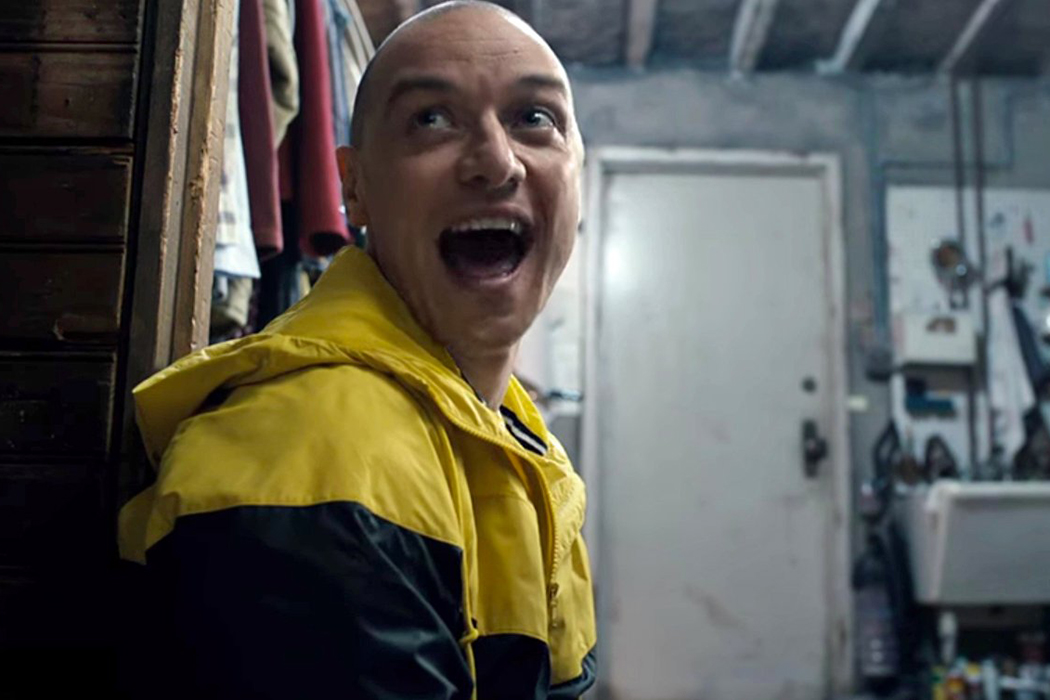Multiplicity: The Art Of Playing Many Roles

Michelle Sabato is an actor and writer from Cleveland, Ohio.…
Imagine being an actor and getting a part, but it’s not just one part, it’s multiple. It’s still one character, but that character has multiple personalities. It might sound scary, or it might sound like like an acting gold mine!
M Night Shyamalan’s long awaited film, Split, was released this January. I, for one, was biting my nails to see the film, and I was not let down. As an actor, the idea of playing multiple personalities is like a sick and twisted dream. James McAvoy’s character in Split is Kevin, a man with 24 different personalities. Nine of those personalities are played out on screen; like Barry, the clothing designer, Patricia, the matriarchal character, Dennis, the strong man, and Hedwig, the nine year old, rap aficionado. There are a few scenes in which McAvoy seamlessly goes from one personality to another, and those scenes were beautiful (and creepy) to watch.
But McAvoy is not the first to take on a role like this. Here are some other powerful performances that made us take a look at dissociative identity disorder (formerly multiple personality disorder).
The Performances That Preceded
Sybil was a miniseries released in 1976, starring Sally Field and Joanne Woodward. Similar to Split, the story-line focuses on the relationship between the doctor and patient, Dr. Wilbur and Sybil. On another similar vein to Split, Sybil begins suffering from her condition due to a childhood trauma. After meeting with Dr. Wilbur, a personality named Vickie comes forth as a quasi-leader of the personalities. She explains what is happening and how the other personalities interact with each other, and their different roles. Dr. Wilbur is able to have Sybil’s multiple personalities meet in order to heal the wounds of her past. While the film is difficult to watch at times, it does close with a happy ending of healing.

Primal Fear, contrary to Sybil, doesn’t have such a happy ending. It’s hard to believe that this was Edward Norton’s breakout role. It just proves that there is a plethora of talented actors waiting in the wings for their perfect job. Primal Fear is a crime thriller, with Norton‘s character, Aaron, on trial for killing an Archbishop. Martin Vail, the defense attorney, played by Richard Gere, insists that Aaron is innocent throughout most of the film. It isn’t until later in the film when Vail confronts Aaron, and Aaron’s violent personality of Roy appears.
This switch-up happens a couple other times in the film, but it is finally revealed that “Aaron” was not his true identity, but Roy is. Vail is forced to leave Roy in his cell and walk away from the whole situation. Norton went on to be nominated for an Academy Award for his performance. But this wouldn’t be the last time we saw Norton in a role dealing with this subject matter. Just three years later he would star in the blockbuster Fight Club, where he would once again play a character with split personalities.
An Actor’s Playground
When an actor gets a role, there is plenty of in-depth preparation that occurs. “Who is this person?” “What motivates them?” “What am I doing in this scene?”All standard questions that an actor poses. Now, you get a role and you have to do that process multiple times, with characters that couldn’t be further from one another. To me, that sounds like a dream to delve into! Also, slightly panic-inducing.

What we can assume from the films that were mentioned is that the actors approached each character individually, as if they were characters in completely different projects. And in a way, they were different projects. Each character looks at the world in a different way, has different mannerisms, different thought processes. And yes, all of these characters are in the body of one person, one actor, but the experiences all have to be different in order to be believable.
Audience Responsibility
Personally, I was moved, entertained, and disturbed by the aforementioned films. They all had great story-lines and challenging acting landscapes. However, it is important as a viewer that we remember that dissociative identity disorder is a real affliction that affects the lives of many people. As an audience member, there is a responsibility and a sensitivity that we need to be aware of. Much like films that touch on topics of poverty, sex trafficking, and drugs; these are themes that need to be treated differently than a lighthearted rom-com.
How do you respond to characters with multiple personalities? Do you feel an obligation to respond differently to films that deal with mental health issues?
Does content like this matter to you?
Become a Member and support film journalism. Unlock access to all of Film Inquiry`s great articles. Join a community of like-minded readers who are passionate about cinema - get access to our private members Network, give back to independent filmmakers, and more.
Michelle Sabato is an actor and writer from Cleveland, Ohio. By the age of 2 Michelle had memorized all the words to The Wizard of Oz. So, yes, she can carry a conversation with just using movie quotes.













